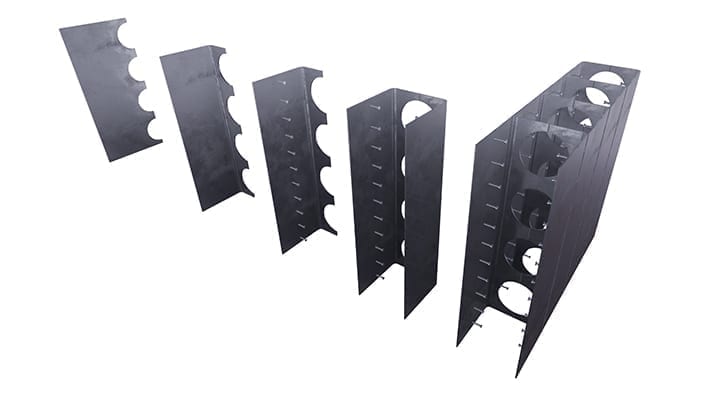Innovative ‘Steel Bricks’ Design Expected to Reduce Time, Cost of SMR Construction
An innovative second-generation steel-composite modular construction system that is planned for use in GE Hitachi’s (GEH’s) BWRX-300 small modular reactor (SMR) plant could dramatically reduce the amount of labor required during nuclear island construction.
Brian Johnson, vice president and BWRX-300 product director with GEH, explained various details about the company’s SMR design as part of a webinar hosted recently by The Nuclear Alternative Project, a network of engineers within the U.S. nuclear industry working to change public perception toward nuclear energy. Johnson said the BWRX-300 reactor building’s main module would be constructed out of Steel Bricks—a system developed by Modular Walling Systems Ltd. (MWS), a company based in Renfrewshire, Scotland. Steel Bricks are fabricated in the UK by structural steelworks manufacturer Caunton Engineering.
“This design actually is expected to have no rebar in the nuclear island, which, compared to existing nuclear plant designs, dramatically reduces the amount of construction labor in the field,” Johnson said.
Steel-concrete composite (SC) construction is a form of modular construction with two steel faceplates that are internally connected to create a sandwich panel. MWS claims it offers the only SC system that can be used for both walls and floors.
The Steel Bricks system is made by folding two pre-cut steel plates into L-shaped sections, which are joined to form a U shape (Figure 1). The faceplates provide permanent shuttering during concrete infill pouring and generate strength through composite action once the concrete has cured. When the concrete cures, this internal scaffolding ensures composite action between the steel faceplates and the concrete core.

Dr. Stewart Gallocher, founding director of MWS, believes the system’s unique design makes it ideal for SMR construction. In a statement, he said: “The Steel Bricks system is a ‘first-of-a-kind’ concept in the fast-emerging world of steel composite construction. It provides not just the walls and suspended floors or roofs in steel composite but most importantly a basemat. This takes away the need for conventional foundations, eliminating the traditional Achilles Heel of this form of construction which are the weak points of the base mat to wall connection.”
Johnson explained how the BWRX-300 construction process will work. “The reactor will be set using very experienced tunneling techniques in basically a vertical boring in the dirt, and then placing these SC modules in that boring. Use of the embedded structure also allows us to take advantage of the surrounding soil to add structural strength to the reactor containment module, and that again allows us to provide a cost-competitive, easily constructible solution,” he said.
“Many attempts have been made during the past 25 years to devise simple, safe and rapid fabrication methods to internally connect steel faceplates. But most have lacked commercial application due to being too expensive and labour intensive,” said Gallocher. “We can now successfully deliver a solution which is technologically proficient whilst providing significant cost and time saving benefits. We believe that this technology, combined with the significant cost and time reductions of off-site manufacture, will now provide a major stimulus for the global roll out of Small Modular Reactors.”
“The amount of labor per volume for these Steel Brick structures is substantially lower than a traditional formwork with rebar tied in place, and it’s a much simpler design from a manufacturability standpoint than traditional steel composite structures,” Johnson said.
—Aaron Larson is POWER’s executive editor (@AaronL_Power, @POWERmagazine).